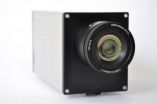(Press-News.org) This news release is available in German.
Mr. S. is visually impaired and dependent on a cane since suffering a stroke. Nevertheless, as a 70-yr old living alone, he would rather not move into a care home. Most older people harbor this wish. They want to stay in their own familiar surroundings and continue to live independently for as long as possible. According to data from the German Federal Statistical Office, this applies to 70 percent of seniors. Against better judgment, they are putting their health at risk, for not only does the risk of cardiovascular problems increase with age, but the risk of falling increases also. According to estimates, about 30 percent of those over 65 years of age living at home experience a fall at least once a year. For those over 80 years old, it is more than 40 percent.
Many of the accidents happen during daily housework. However, older persons who are unsure on their feet frequently have accidents at night as well. Often it is hours before they are assisted. They cannot always trigger a domestic emergency device, often called a radio button – because they are not wearing the device, are unconscious, or injured. An emergency alarm like this therefore only offers limited help, just as sensors worn on the body. These sensors react as well to rapid hand movements and are therefore particularly prone to triggering false alarms. Sensors built into the floor no doubt detect emergencies, but they can only be installed through extensive construction at great financial expense.
Maintenance-free and cost-effective emergency system
A system that was maintenance-free, able to detect emergency situations automatically, and could be integrated cost-effectively into every home without restricting the movement of the occupant would be quite helpful. Such a solution, providing safety in every room, is currently under development by researchers at the Fraunhofer Institute for Manufacturing Engineering and Automation IPA using safe@home. The partners in the project are the BruderhausDiakonie, a nonsecular social service foundation in Reutlingen, as well as the Vitracom and Sikom companies. Sensors boxes installed like smoke detectors on the ceiling register when a person falls or needs assistance. If a box detects an emergency situation, it notifies the alarm unit in the home, the CareBox. This unit immediately calls for help – by telephone, cell phone, or internet.
The system works with highly sensitive optical and acoustic sensors that determine the location and condition of a person as well as their movements within a room. The technology uses this data to detect a fall within seconds and identifies a motionless state if no movements are detected within a specific period of time. The system also responds to cries for help. "The occupant is immediately phoned by the CareBox in order to exclude a false alarm. A computer-generated voice asks how they are. The occupant can cancel the alarm by answering. If they fail to answer the phone, safe@home identifies it as an actual emergency," explains Marius Pflüger, a scientist at IPA in Stuttgart. In this case, family members, neighbors, or care givers are notified. "The sensor boxes, which are about the size of a box of chocolates, operate unobtrusively and automatically. Changing batteries, activating the hardware – none of this is necessary. Privacy is also assured, since the data are evaluated directly in the sensor without having to be stored or transmitted," says Pflüger.
Prototypes of the emergency detection system have been undergoing round-the-clock operational testing in six residential care home units since mid-2012. In order to establish statistically significant detection rates, emergency situations were simulated in addition to evaluating normal operation. So far, the subjects of the test system have accepted the system and do not feel the the sensor boxes are annoying. Instead, they fulfilled their main requirement of enhancing personal safety. The seniors assess the automatic confirmation as useful. "One reason for the high acceptance rates are the comprehensive interviews we carry out in advance with potential users in order to find out what they value in a fall detection system," says Pflüger. The most important thing for those interviewed was that the system work reliably and properly in every room during routine daily life, and that it could be integrated in every kind of living space. Those interviewed also wanted to have as little contact with the technology as possible.
Safe@home should be ready for market in late 2014. Pflüger and his team are assuming high market demand. There are already over 5.4 million people in Germany 60 years and older living alone in their own homes today. In 2030, 33 percent of the population in this country will be over 65.
INFORMATION: END
Helping preserve independent living
2014-02-12
ELSE PRESS RELEASES FROM THIS DATE:
Male Pinterest users are more interested in art than cars
2014-02-12
Male users of Pinterest pin more content about photography, art, design, and home decor than sports, technology and cars, says a new study by researchers at the University of Minnesota and Georgia Tech.
The study revealed that while women and men differed in the types of content they collected and the degree to which they specialized, surprisingly men were not particularly interested in stereotypically male topics.
The most popular topics on Pinterest tend to be of "traditional female" interest including food and drink, crafts, home decor, and women's fashion. While ...
Weight loss program for infrared cameras
2014-02-12
This news release is available in German. We want it cozy and warm in our homes when the thermometer outside gets down into the minus area. Especially with older buildings, however, the money we pay for heat ends up out the window. The fault lies hidden in incorrect insulation, or at spots around windows or ceiling joints that are not sealed. These weak points cannot be perceived from outside – unless you are viewing the building though the lens of an infrared camera. This type of camera is equipped with specialized sensors that distinguish the temperature differences ...
From surf to turf: Archaeologists and chemists trace ancient British diets
2014-02-12
The change by our ancestors from hunter-gathers to farmers is one of the most intensively researched aspects of archaeology. Now a large-scale investigation of British archaeological sites dating from around 4,600 BC to 1,400 AD has examined millions of fragments of bone and analysed over 1,000 cooking pots.
The team, led by Professor Richard Evershed of the University of Bristol's School of Chemistry, developed new techniques in an effort to identify fish oils in the pots. Remarkably, they showed that more than 99 per cent of the earliest farmer's cooking pots lacked ...
Prostate cancer advance could improve treatment options
2014-02-12
Researchers at the University of East Anglia have made an important advance in understanding genetic changes associated with terminal prostate cancer.
Findings published today in the British Journal of Cancer, and funded by the Association for International Cancer Research (AICR), show how a genetic mutation in untreated patients is linked to aggressive cancer later in life. It was previously thought that the mutation only occurred in response to therapy.
The research highlights why relapses could occur in some men following hormone therapy. And it could help identify ...
Mountains, models, salt, sand, and cycles
2014-02-12
Boulder, Colo., USA – Topics in this current batch of Geology articles posted ahead of print include the puzzle of parallel mountain chains; 25 years on the East Pacific Rise; unique episodes in Earth's history; turbidity currents; computer models; Wilson cycles; salt structure beneath the sea bed; the North Scotia Ridge; El Hierro, Canary Islands; sand-sized sub-spherical silica grains; bank pull or bar push; kaolinitic paleosols; Earth's youngest, hottest rocks; 3-D thermo-mechanical numerical models; and the Bohemian Massif.
Open Access Papers:
1. Sublithospheric ...
Filling me softly
2014-02-12
Surgical implants are widely used in modern medicine but their effectiveness is often compromised by how our bodies react to them. Now, scientists at the University of Cambridge have discovered that implant stiffness is a major cause of this so-called foreign body reaction.
This is the first time that stiffness of implant materials has been shown to be involved in foreign body reactions. The findings – published in the journal Biomaterials – could lead to major improvements in surgical implants and the quality of life of patients whose lives depend on them.
Foreign ...
The physics of curly hair
2014-02-12
CAMBRIDGE, Mass-- The heroes and villains in animated films tend to be on opposite ends of the moral spectrum. But they're often similar in their hair, which is usually extremely rigid or — if it moves at all — is straight and swings to and fro. It's rare to see an animated character with bouncy, curly hair, since computer animators don't have a simple mathematical means for describing it.
However, change may be coming soon to a theater near you: In a paper appearing in the Feb. 13 issue of Physical Review Letters, researchers at MIT and the Université Pierre et Marie ...
Test for persistent Lyme infection using live ticks shown safe in clinical study
2014-02-12
In a first-of-its-kind study for Lyme disease, researchers have used live, disease-free ticks to see if Lyme disease bacteria can be detected in people who continue to experience symptoms such as fatigue or arthritis after completing antibiotic therapy. The technique, called xenodiagnosis, attempts to find evidence of a disease-causing microbe indirectly, through use of the natural disease-carrier—in this case, ticks. It was well tolerated by the volunteers, but investigators could not find evidence of Lyme disease bacteria in most of the cases where enough ticks were collected ...
U-M scientists & colleagues investigate the fiber of our being
2014-02-12
ANN ARBOR, Mich. — We are all aware of the health benefits of dietary fiber. But what is dietary fiber and how do we metabolize it?
Research at the University of Michigan Medical School, the University of York's Structural Biology Laboratory, and institutions in Canada and Sweden, has begun to uncover how our gut bacteria metabolize the complex dietary carbohydrates found in fruits and vegetables.
Trillions of bacteria live in human intestines - there are about ten times more bacterial cells in the average person's body than human ones. Known as "microbiota", these ...
NASA satellite sees Tropical Cyclone Fobane spinning down
2014-02-12
Tropical Cyclone Fobane continues to be battered with increasing vertical wind shear as it moves southward through the Southern Indian Ocean. NASA's Aqua satellite passed overhead and saw the bulk of precipitation and bands of thunderstorms were south of the center.
On Feb. 12 at 0900 UTC/4 a.m. EST, Tropical Cyclone Fobane had maximum sustained winds near 45 knots/51.7 mph/83.3 kph. Fobane was centered near 27.6 south latitude and 64.7 east longitude, about 596 nautical miles southeast of Port Louis, Mauritius. Fobane is moving to the south-southwest at 11 knots/12.6 ...




